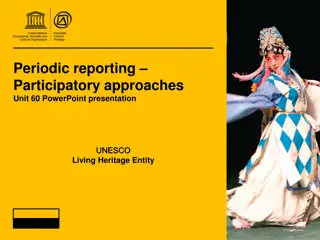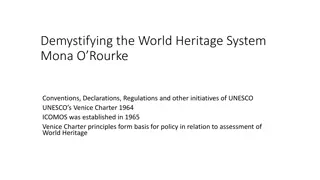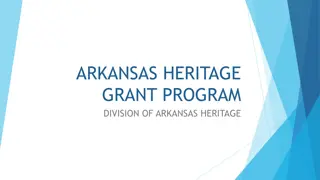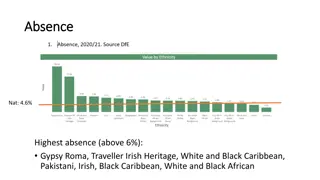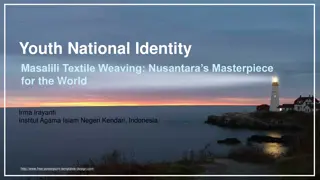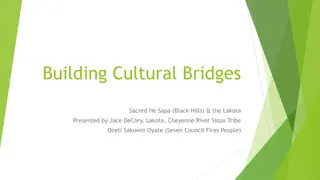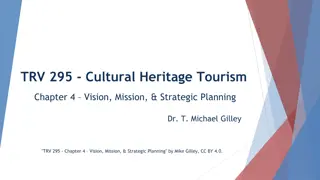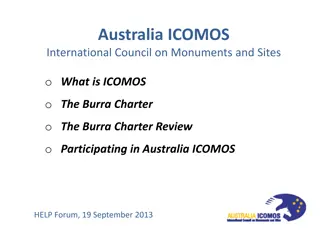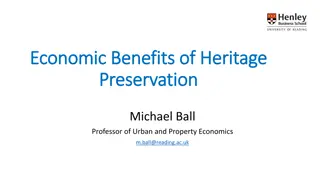Exploring the Cultural Significance of the Black Hills and the Lakota Heritage
Delve into the rich history and sacred importance of the Black Hills for the Lakota people, tracing their ancestral rights, struggles, and ongoing efforts to preserve their cultural heritage and connection to the land. Learn about Lakota values, teachings, and the spiritual significance of sacred sites within the Black Hills region.
Download Presentation

Please find below an Image/Link to download the presentation.
The content on the website is provided AS IS for your information and personal use only. It may not be sold, licensed, or shared on other websites without obtaining consent from the author. Download presentation by click this link. If you encounter any issues during the download, it is possible that the publisher has removed the file from their server.
E N D
Presentation Transcript
Building Cultural Bridges Sacred He Sapa (Black Hills) & the Lakota Presented by Jace DeCory, Lakota
He Sapa Paha Sapa Black Hills The Heart of Everything Sacred Land of the Lakota & other Tribal Nations Lakota claim aboriginal Indian Title right of possession, use & occupation Recognized Indian Title based on Ft. Laramie Treaties of 1851 and 1868 Treaty recognized Lakota title of 60 million acres, including the Black Hills 1866-1868, Lakota fought Powder River War with U.S. to protect buffalo herds & land; ended with 1868 Treaty Created 26 million acre reservation all of present day S.D. west of Missouri, including Black Hills, for the absolute & undisturbed use & occupation . 1874 Custer led military expedition into BH; violation of Treaty; Gold Rush! June 25, 1876, Lakota + allies defeated Custer at Little Big Horn in MT Congress passed Sell or Starve Act - Agreement of 1877 (loss of Black Hills)
The Black Hills Are Sacred The Black Hills Are Not For Sale Indian Claims Commission Act of 1946 monetary compensation, not ancestral lands Long-standing legal/court battles and litigation regarding Black Hills claims June 30, 1980, U.S. affirmed 1974 ICC ruling - Lakota entitled to $102 million for He Sapa In support of this ruling, the Court found that a more ripe and rank case of dishonorable dealings will never, in all probability, be found in our history. The Lakota have rejected the money (now 1.3 billion +) No compensation offered/awarded for millions of dollars worth of gold taken from He Sapa Since Homestake Mine s closing in 2002, we must continue to protect Unci Maka (Grandmother Earth) from further desecration through respectful use and handling of water, minerals, rocks and materials associated with this sacred landscape Periodic smudging and tobacco offerings left to please spirit ancestors & that which is holy
Tiwahe Household/Home Oyate Nation/People Lakota Values: respect, generosity, courage, fortitude, compassion, prayer = wisdom Woonspe/Teachings: Frank Fools Crow (Mato Wanbli Eagle Bear), Scholastica Mad Bear + many other elder relatives Tiospaye/Extended Family: relatives by birth, marriage & adoption Medicine Wheel: 4 winds, 4 directions, 4 colors, 4 nations
Wiconiya Wakan or Washun Niye - Sacred Wind Breath - or Maka Oniye (Breath of the Earth) Kinapapi where the buffalo come out - Wind Cave - Lakota Emergence The Pte Oyate emerged ikce wicasa - common man/people Paha - Gathering Place/Hill (Mt. of the People); Wakinyan Paha/Thunder Mt., Wakinyan Thunderbird s Nest or Hihan Kaga Paha (Owl Created or Resembles An Owl Mt.) Elk Peak - Spring equinox (March/April) Welcome back the Wakinyan Oyate; prayers for no drought or illness; give thanks for water/plants - gifts from Wakinyan - Thunder/Lightening Spirit Bear Butte (also called Mato Wakan or Paha Wakan) - prayer site for vision quests/fasting crying for a vision ); Lakota people convened every seven years at Bear Butte for Council meetings (Fasting is mainly done in May through August today.) Bald (Top) Mt. or Pte TaHocoka Center for the great buffalo altar; considered center of universe in the Black Hills ; Wiping of Tears ceremony; Wopila (thank you) for all life, past & present, spring/April Every kind of society needs these kinds of sacred places because they help to instill a sense of social cohesion in the people and remind them of the passage of generations that have brought them to the present. A society that cannot remember and honor its past is in peril of losing its soul. - Vine Deloria, Jr. (Lakota, Standing Rock) (compiled/revised by Jace DeCory, Asst. Professor Emeritus//BHSU 2017)
Preservation of Culture & Language Conclusions and Q & A These lands hold the memory of our ancestors Ancient sites tied to ehanni stories, and special ceremonies held at each Wazipa -(container) He Sapa - home to animals, food & plants for medicine Must protect and honor these sacred places against unwise development Work together to preserve and celebrate our shared history We are all responsible for our future generations Pilamiyaye Thank you Mitakuye Oyasin We are all related
Ms. Jace DeCory, Asst. Professor Emeritus American Indian Studies College of Liberal Arts Black Hills State University 605-722-8648 Spearfish, SD jace.decory@bhsu.edu For our ancestors, our relatives, our children and grandchildren to come .






